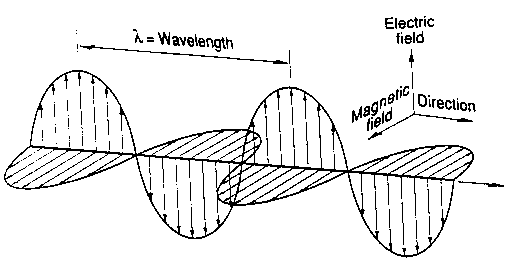


The most simply described electromagnetic wave consists of two sinusoidal disturbances that can be explicated with the same quantities that define other sinusoidal functions, namely: wavelength, amplitude and phase. One of these waves is described as the magnetic component, the other as the electric. The waves oscillate perpendicularly to each other, so that if viewed from head on they would look like the X-Y axis

The wavelength is that which describes the very nature of the electromagnetic wave, i.e., radio is in one range of wavelengths, light another. (The range of wavelenghs shown below.)
The amplitude, on the other hand, controls the power of the wave. The wavelength and amplitude of the electromagnetic wave depend on how it is produced. All of the characteristic values of the wave are described indirectly by Maxwell's equations. However, even Maxwell himself knew that his equations were only a way of describing electromagnetic phenomenon. As he wrote of his theory, "...We must recollect that it is founded only on a resemblence in form [emphasis his] between the laws of light and those of vibrations."
Thanks to the State of Louisiana, David J. Shneider and Imagers.